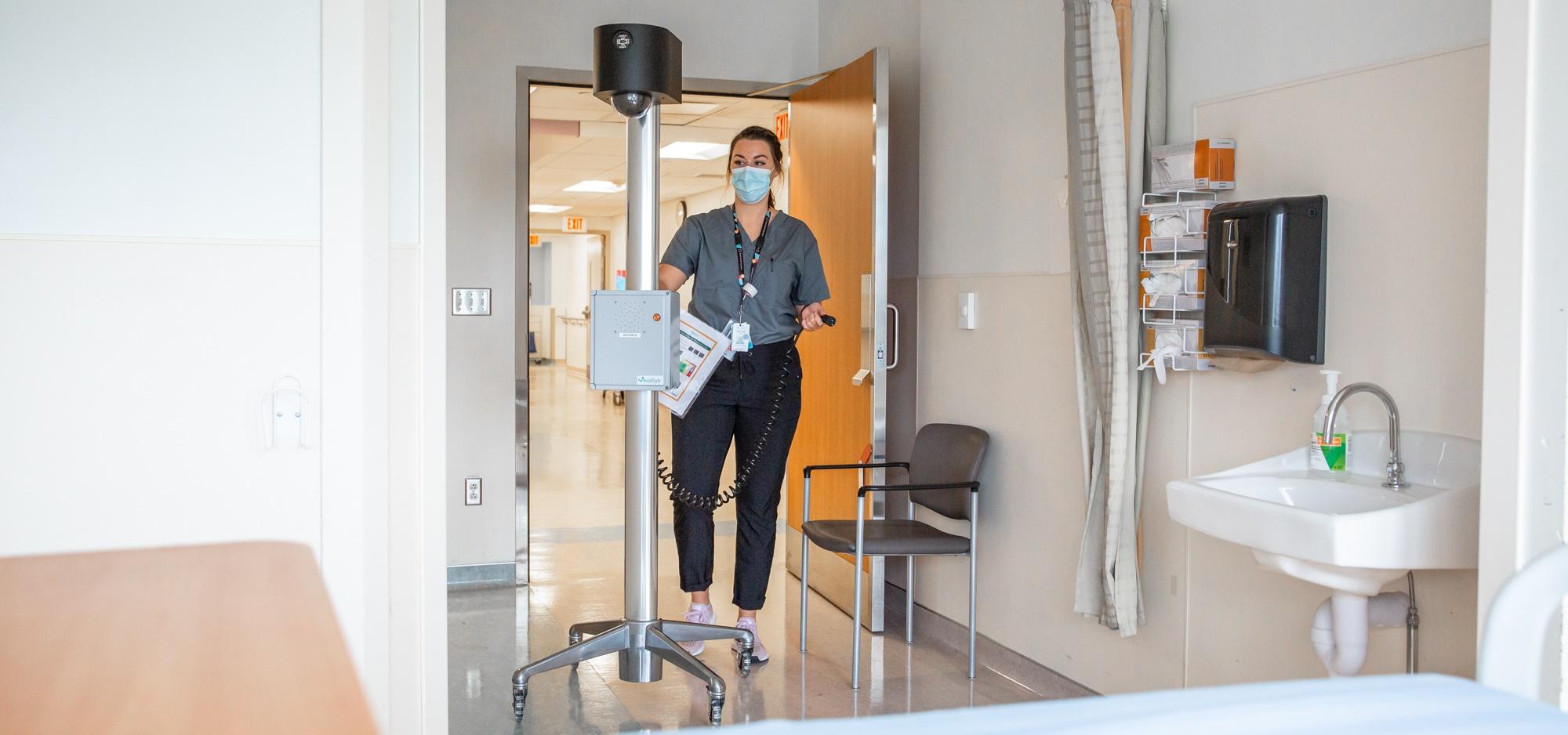In isolation, but not alone: New technology helps clinicians communicate with inpatients who have COVID-19

When a patient with COVID-19 is admitted to Mount Sinai or Bridgepoint, they may notice the tall metal device on wheels standing in their room. It looks a little bit like a robot, but it’s actually a camera.
It’s part of an innovative new system that has been introduced to units at Sinai Health, to help clinicians check on and communicate with their patients who have COVID-19.
The Quality and Patient Safety team worked with Information Services and clinical teams to safely and securely implement the system across five units at Bridgepoint and Mount Sinai. The cameras do not record video but they give clinicians a 360-degree view inside the patient room and enable them to communicate with their patients any time, remotely from a monitor at the nursing station.
Yan Hao, an RN on a General Internal Medicine unit at Mount Sinai has found the system to be an essential tool during the pandemic. “It reduces the frequency that I need to go into a room and don and doff personal protective equipment,” she says.
Entering patient rooms less often not only means using less personal protective equipment, but also reducing the potential for exposure to infection, helping to keep everyone safe.
Yan says during the night shift, the system is often useful in helping nurses check on their patients every hour. During the day, it may be used when clinical teams are in the patient room providing care and need something from outside. Using the voice activated technology, they can request a colleague to bring a piece of equipment or water for the patient.
Sasha Smith, an RPN at Bridgepoint says the system also provides peace of mind for patients. “Being in isolation is lonely. Sometimes they just need reassurance and to connect with someone. I can talk to them and provide that without entering the room,” she adds.
A fast implementation of the new technology was possible as the system was originally planned to serve a different purpose—monitoring patients at a high risk of falls. It was poised for widespread launch at Bridgepoint and Mount Sinai when the pandemic hit.
Agnes Tong, Quality and Patient Safety Manager says when it became clear the falls prevention project launch would be put on hold, the team quickly saw the potential to use the technology to care for patients with COVID-19. “Improving patient safety means thinking differently, being creative to find better ways to work and solve problems,” she says. “It was because of this type of innovative thinking that we were able to quickly change course and use this technology in a different way, to benefit our patients and employees.”
Now that the system is successfully up and running to support care for patients with COVID-19, the Quality and Patient Safety team is rolling it out for its original intended use—monitoring patients at risk of falls. Agnes says it can serve both purposes and the team will continue to investigate other ways the technology could be used.












